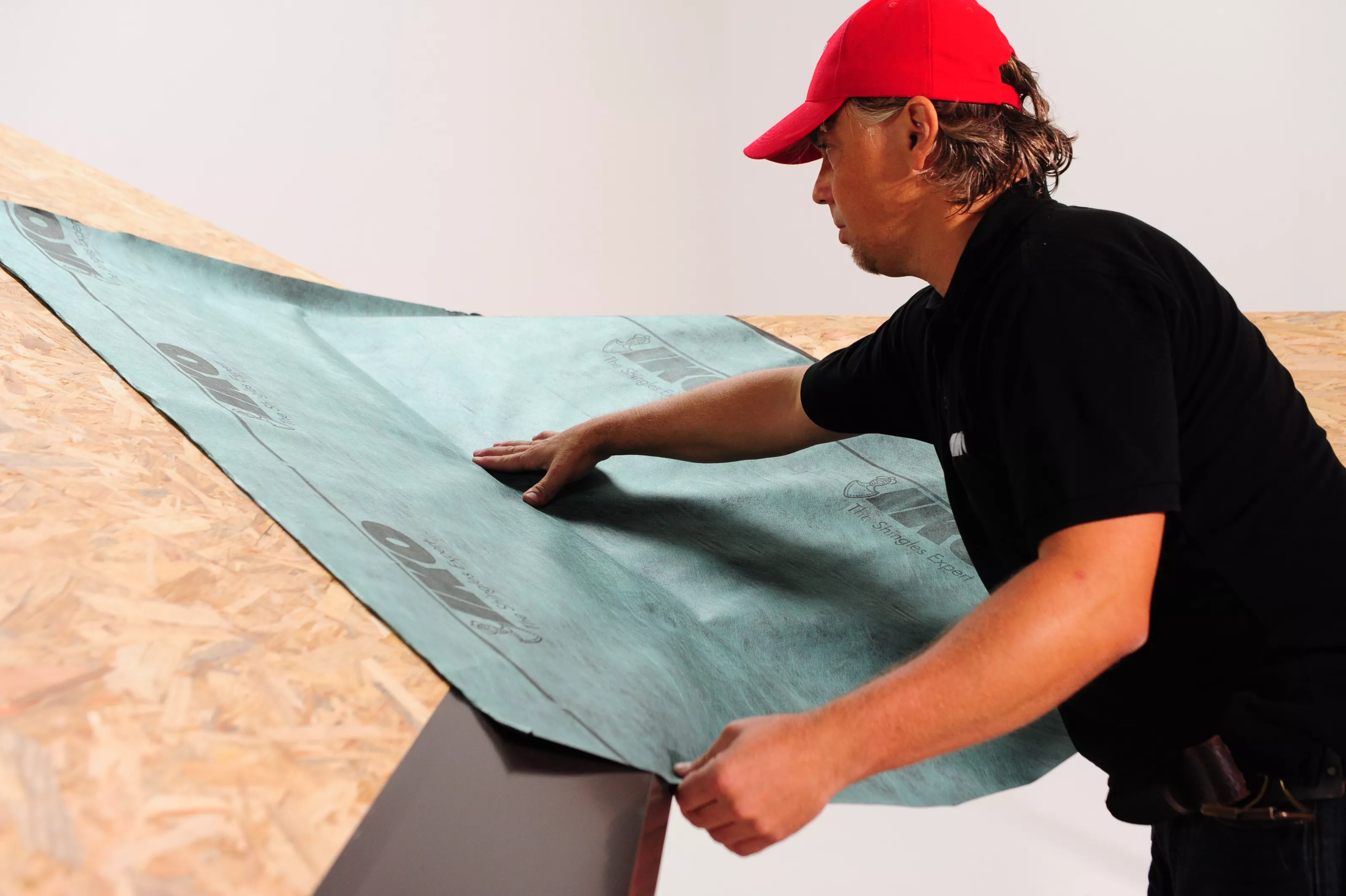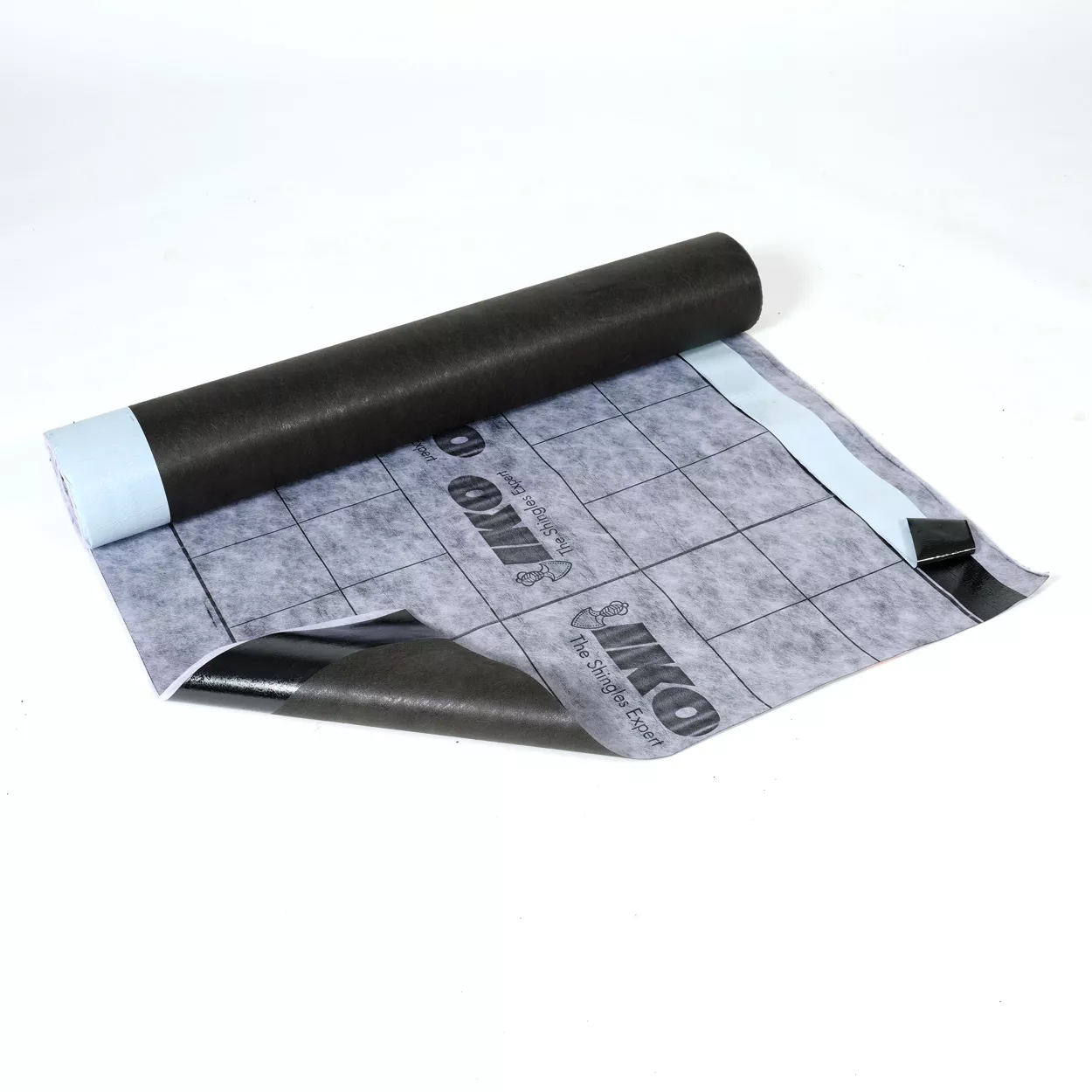Search
Search
1361 results were found.
5. Should I protect unpacked bundles from the rain?
Shingles on the roof will be exposed to all extreme weather conditions. Therefore there is no need to protect them from the rain if they are still in packages. However we recommend protecting the bundles from direct sunlight to prevent shingles sticking together in their packaging. Also do not pile up shingles on top of each other to avoid any likely damage. Make sure the shingles are dry before you install them so they will stick to the roof surface immediately after the installation. If the shingles are wet, let them dry before the installation.
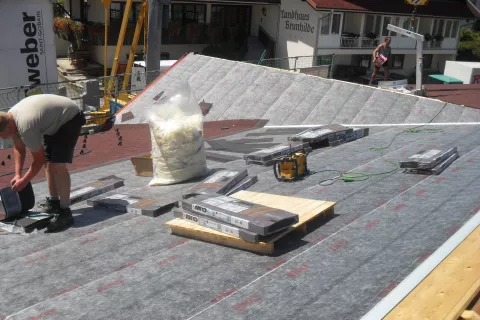
6. Sudden rain and shingles installation of a new roof – what can you do?
When you are building a new two-layered shell roof structure, a breathable membrane must be installed over the rafters. That way the roof structure, insulation and drywalls are all protected against water penetration. For a shingle roof, a wooden deck is installed on the top of rafters. Since the wooden deck made of OSB or wooden boards needs to stay dry, it is necessary to immediately install the underlayment to avoid any buckling problems. If you don’t have the time to do this, you must cover the surface with a watertight tarp.
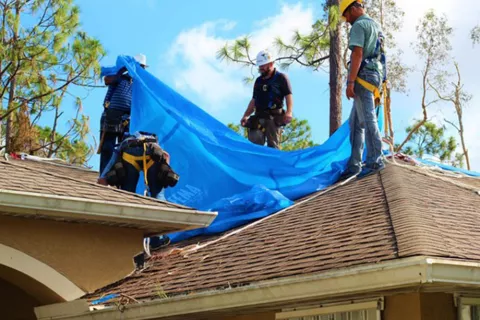
7. Sudden rain when installing a pergola, garden house or garage – what can you do?
When it rains during the installation of shingles on small roofs, you have to follow the same procedure as the larger roofs. So in case of rain, temporary protect the roof. These roofs are often less complicated and therefore easier to protect. Just tight a tarp over the roof so wind doesn’t blow water under it. Once the rain has passed and the wooden deck is dry, you can continue with the installation.
8. What tarp to use?
Tarps or tarpaulins are made from plastic. They are waterproof and sold in various sizes. They have ring openings around their perimeter for fixing ropes or weights. You can buy them online or at any hobby market or hardware store.
And to finalize, here are some extra tips on how to be prepared during seasons of rain and storm:
- Choose the right tarp - Don’t try to save money on the quality of the tarp. The tarp should be durable, waterproofed and UV resistant for a long time.
- Think about tarp size - This depends on the area of the exposed roof in need of protection. The tarp must be oversized to account the overlap on the sides and edges of the roof deck. Two or three tarps may be required.
- Be prepared, have a stock of wooden battens, screws, a screw-gun and some weights - For weight, you can use full unpacked bundles.
- Install the tarp - Secure one side first and make sure the tarp is the right side up. Pull tight and remove all wrinkles. Then put bundles on the ends and secure them with battens and screws.
- Silver heavy-duty duct tape - If the tarp gets punctured in some way you can tape it on the underside.
- Cover the underlayment with the tarp - When you leave the job, cover your underlay with a tarp to protect it against moisture. Next morning you can start installing shingles on a dry underlay without any wrinkles.
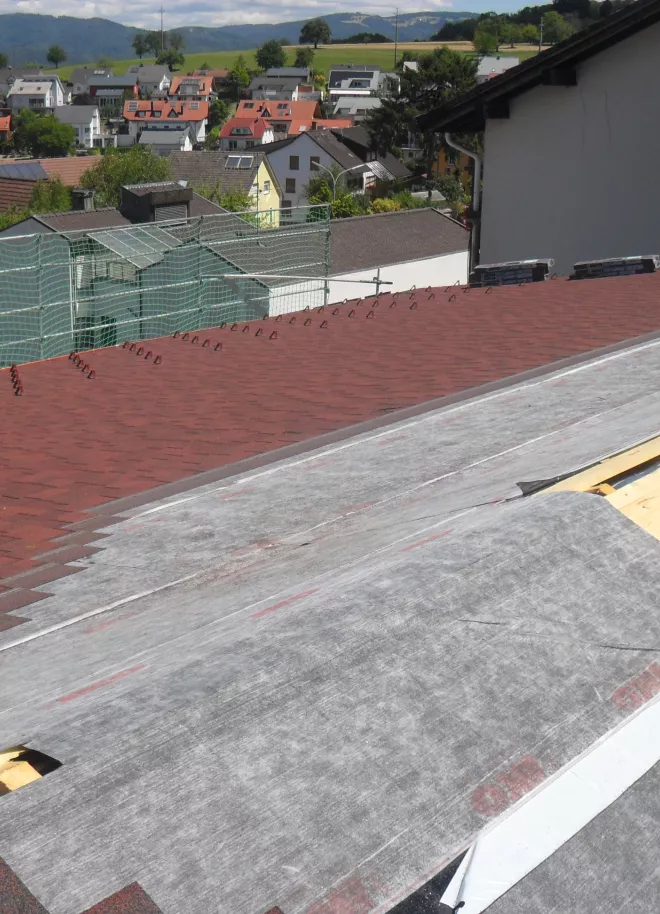

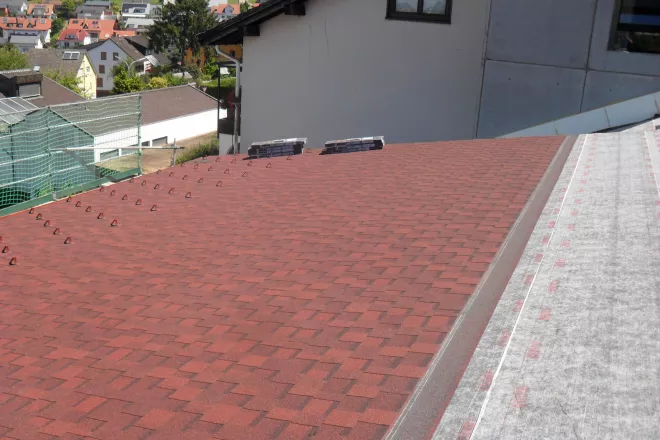
How roof professionals can handle extreme weather situation during roof application:
Each roofer has his own tricks on how to protect the roof from sudden rain. For locations close to the sea or ocean, heavy rain showers are very common throughout the year. Roofers cannot wait too long for a dry period, so they build a superstructure or temporary roof over the working area to be able to carry on working while it is raining.
Many responsible roofers are prepared for all these emergency situations but it’s also good to have roofers liability insurance. As a busy professional, they need to be insured so they can focus on their work with the confidence of a solid coverage behind them.
So don’t hesitate to start the renovation or the new project if there is some rain in sight. Take the right precautions and you will be able to get a lot of work done in a safe way!
Interested in the product mentioned in this blogpost?
For many homeowners, damages caused by bad weather are one of their biggest worries, which shows the importance of a storm resistant roof. Experience in recent years shows that extreme weather events such as storms and heavy rains are becoming more common.
Let us share with you some important information on how to prevent your house and especially your roof from unwanted damage by high wind speed, and how you can make your roof storm resistant.
We will advise you on what to do when there is a storm alert, what you should think about when you plan to repair or renovate your roof, and what kind of checklist might be useful for you and your insurance company in case of damage caused by a storm.


